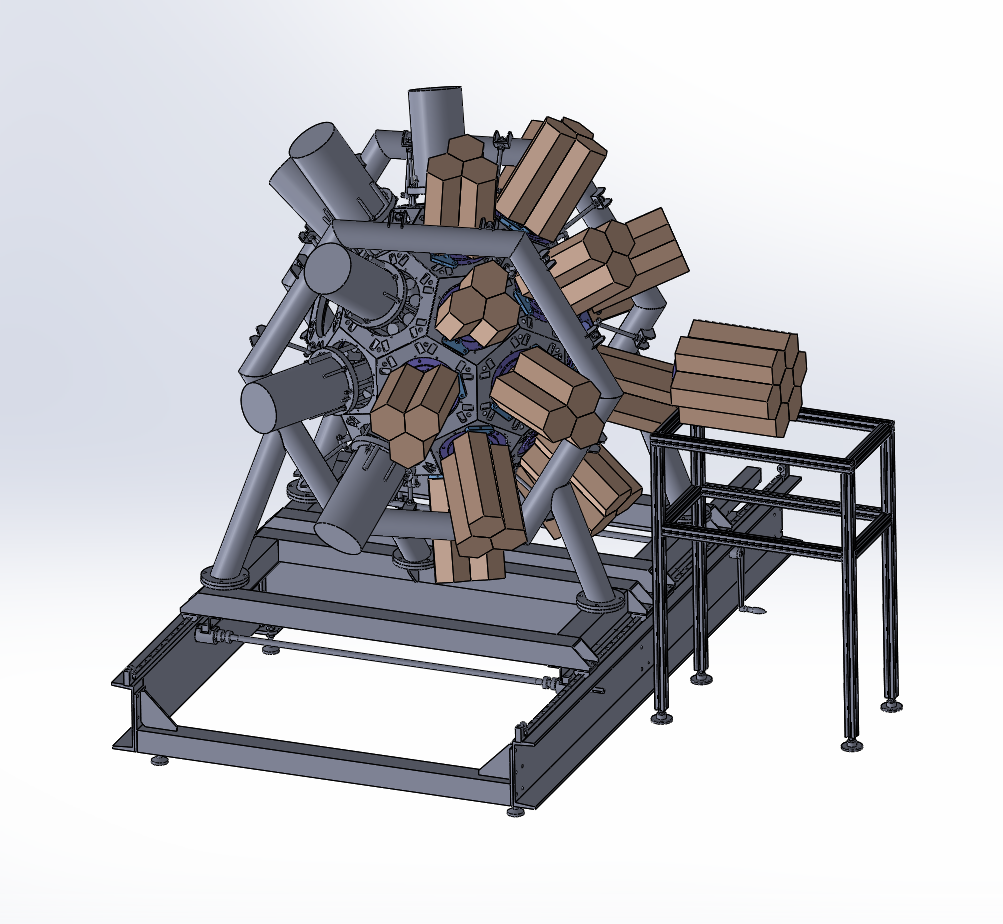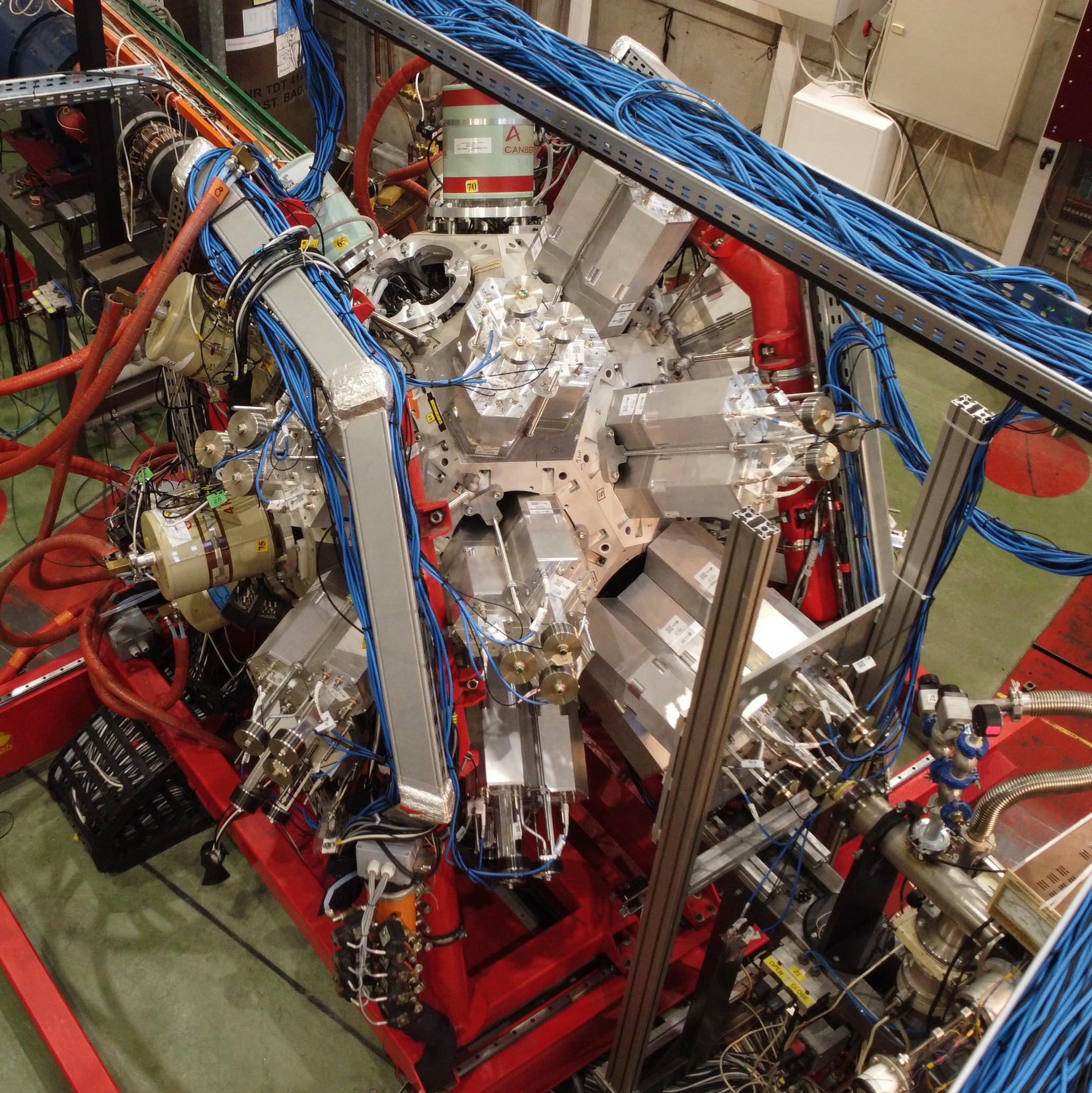NEDA (Neutron Detector Array) is available for experiments at the Heavy Ion Laboratory (HIL) of the University of Warsaw. NEDA works in connection to the EAGLE gamma-ray spectrometer. The primary application of the NEDA-EAGLE setup (nicknamed NEEDLE) is to study proton rich nuclei using fusion-evaporation reactions, with NEDA serving as a neutron multiplicity filter. The DIAMANT charged particle array may additionally be installed inside the array, providing information on the multiplicity of the emitted protons and alpha particles.
NEDA was transported to HIL in December 2021. In summer 2022 the EAGLE array was dismounted and modified to meet NEDA needs. Subsequently, three NEDA detectors were installed in each of the 15 forward faces of the frame (which has a shape of a trunctated icosahedron). In addition 7 NEDA detectors were positioned downstream of the array, forming a forward wall. This gives a total of 52 NEDA detectors installed. The zero degree detector of the forward wall is removed in experiments in which the beam is not stopped inside the array, to make space for the beam pipe, leading to the beam dump. The centers of the front faces of the NEDA detectors are 526–528 mm and 657– 673 mm from the target, for the detectors situated in the EAGLE frame and for the forward wall, respectively.
A CAD drawing of the NEEDLE setup is shown in the figure below. Fifteen HPGe EAGLE detectors are marked in grey colour, while 52 NEDA detectors are shown in brown.


Picture of NEEDLE
Detection efficiencies of the NEEDLE setup:
EAGLE photopeak efficiency : eff(γ) = 1.4%
NEDA: eff(1n) = 30%, eff(2n) = 6%
A workshop aimed at the discussion of experimental projects employing NEEDLE was held at HIL on 20-21 October 2021. Proposals for experiments involving NEDA have so far been considered at PAC meetings in April 2022 and April 2023. Six experiments have been approved and are gradually executed. NEDA proposal are also welcome at the PAC meeting to be held in January 2024.
The NEutron Detection Array NEDA was constructed by an international collaboration in years 2008–2018. In 2018 it was used together with the AGATA tracking array at GANIL, Caen, France. In 2024 it will be again connected to AGATA, this time at the Laboratori Nazionali di Legnaro, Legnaro, Italy. See the following papers for further information on NEDA:
J. Valiente-Dobón, et al. NEDA—NEutron Detector Array, Nucl.Instr.Meth. A927, 81 (2019)
G. Jaworski, et al. The new neutron multiplicity filter NEDA and its first physics campaign witg AGATA, Acta Phys. Polonica B50, 585 (2019)
The installation and use of NEDA at HIL is supported by the Polish National Science Center, grants. no 2020/39/D/ST2/00466 and 2017/25/B/ST2/01569.

